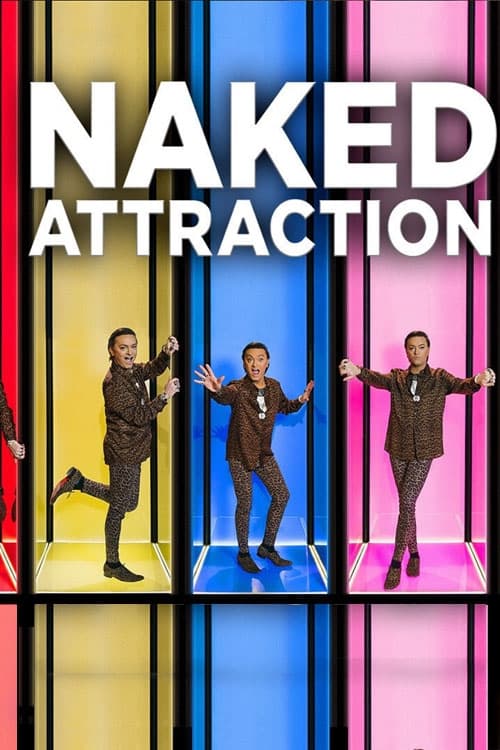
Ask Your Own Question
What is the plot?
In Episode 82 of "Lenßen übernimmt," the episode opens with a tense atmosphere in the office of Lenßen, who is reviewing a case file that has recently come to his attention. The camera pans over the documents, revealing a complex web of deceit involving a missing person and a potential fraud scheme. Lenßen's expression is serious as he contemplates the implications of the case, indicating his determination to uncover the truth.
The scene shifts to a local café where Lenßen meets with his assistant, who provides him with additional information about the missing person, a young woman named Clara. The assistant reveals that Clara was last seen with a group of friends who are now acting suspiciously. Lenßen's brow furrows as he realizes that the friends may hold the key to solving the mystery. He decides to interview them, motivated by a sense of responsibility to find Clara and bring her home safely.
Next, Lenßen and his assistant arrive at a trendy bar where Clara's friends are gathered. The atmosphere is lively, but Lenßen's demeanor is focused and serious. He approaches the group, introducing himself and explaining the situation. The friends appear nervous, exchanging glances as Lenßen begins to ask pointed questions about Clara's last known whereabouts. One friend, visibly anxious, stammers through his answers, raising Lenßen's suspicions further.
As the interrogation continues, one of the friends, a young man named Max, suddenly becomes defensive. He accuses Lenßen of overstepping his bounds and insists that they have nothing to do with Clara's disappearance. Lenßen, undeterred, presses on, noting inconsistencies in their stories. The tension escalates, and Lenßen's frustration is palpable as he realizes that they are hiding something. He decides to take a more direct approach, threatening to involve the police if they do not cooperate.
The scene transitions to Lenßen's office later that evening, where he and his assistant analyze the information gathered from the friends. They piece together a timeline of Clara's last known movements and identify a potential lead: a mysterious figure seen with her on the night she went missing. Lenßen's determination intensifies as he vows to track down this individual, believing they may hold crucial information about Clara's fate.
The following day, Lenßen and his assistant visit a local nightclub that Clara frequented. The atmosphere is dark and pulsating with music, creating a stark contrast to the seriousness of their mission. They speak with the club owner, who reluctantly reveals that he saw Clara with a man matching the description of the mysterious figure. Lenßen's eyes narrow as he realizes they are getting closer to the truth.
In a pivotal moment, Lenßen receives a tip-off about the man's whereabouts. He and his assistant rush to a rundown apartment complex, their urgency palpable. As they approach the door of the apartment, Lenßen's heart races with anticipation and anxiety. He knocks firmly, announcing their presence. After a tense moment, the door creaks open, revealing the man they are looking for.
A confrontation ensues as Lenßen demands answers. The man initially tries to deny any involvement with Clara, but Lenßen's relentless questioning forces him to crack. He reveals that Clara was involved in a dangerous situation involving a debt to a local gang. Lenßen's expression shifts from determination to concern as he realizes the gravity of the situation. He understands that time is of the essence and that Clara's life may be in jeopardy.
The scene shifts to a dark alley where Lenßen and his assistant confront the gang members who are holding Clara. The atmosphere is charged with tension as Lenßen attempts to negotiate her release. The gang members are aggressive and dismissive, but Lenßen remains calm, using his legal knowledge to leverage a deal. He offers to help them with their legal troubles in exchange for Clara's freedom.
As the negotiation unfolds, a fight breaks out when one of the gang members becomes enraged. Lenßen and his assistant are forced to defend themselves. The fight is chaotic, with punches thrown and objects used as makeshift weapons. Lenßen's determination to protect Clara fuels his actions as he fights back against the gang members, showcasing his resourcefulness and resilience.
In the climax of the episode, Lenßen manages to subdue the gang members long enough to rescue Clara, who is shaken but unharmed. The emotional reunion is poignant, with Clara expressing her gratitude to Lenßen for saving her life. Lenßen's relief is evident as he reassures her that she is safe now.
The episode concludes with Lenßen and Clara leaving the alley, the weight of the ordeal still heavy in the air. Lenßen reflects on the case, knowing that while they have achieved a victory, the underlying issues of crime and danger in the community remain. The final shot lingers on Lenßen's determined expression, hinting at his ongoing commitment to justice and the protection of those in need.
Related Titles
Browse All Titles →
What is the ending?
In the ending of "Lenßen übernimmt," Season 2, Episode 82, the main characters confront the consequences of their actions. Tensions rise as unresolved conflicts come to a head, leading to a dramatic resolution. The episode concludes with a sense of closure for some characters while leaving others with lingering questions about their futures.
As the episode unfolds, we find ourselves in a tense atmosphere, where the stakes have never been higher. The scene opens in Lenßen's office, where he is poring over case files, his brow furrowed in concentration. The weight of the investigation hangs heavily on him, and his determination to uncover the truth is palpable. He is driven not only by professional duty but also by a personal connection to the case, which adds an emotional layer to his resolve.
Cut to a dimly lit warehouse, where a confrontation is brewing. Lenßen and his team have tracked down a key suspect, and the air is thick with anticipation. The camera captures the flickering lights overhead, casting shadows that dance ominously on the walls. As Lenßen enters, his heart races; he knows that this moment could change everything. The suspect, cornered and desperate, reveals critical information that shifts the entire narrative. The tension escalates as Lenßen presses for answers, his voice steady but urgent.
In a parallel scene, we see the emotional turmoil of another main character, who grapples with guilt over past decisions. This character's internal struggle is visually represented through close-up shots of their face, reflecting a mix of regret and determination. They are torn between loyalty to their friends and the need to do what is right. This conflict culminates in a pivotal moment where they must choose between silence and speaking out, a decision that will impact the lives of everyone involved.
As the episode progresses, the climax builds towards a confrontation that brings all the main characters together. The setting shifts to a public space, where the tension is palpable. Lenßen stands firm, advocating for justice, while others around him wrestle with their own motivations. The dialogue is sharp and charged, revealing the complexities of each character's journey. The stakes are laid bare, and the audience can feel the weight of their choices.
In the final moments, the resolution unfolds. Some characters find redemption, having faced their demons and made amends. Lenßen, having successfully navigated the treacherous waters of the case, stands tall, a sense of accomplishment washing over him. However, not all characters emerge unscathed; some are left to grapple with the consequences of their actions, hinting at unresolved issues that may linger beyond the episode.
The episode closes with a poignant scene that encapsulates the themes of justice, redemption, and the human condition. As the camera pans out, we see Lenßen looking out over the city, a mixture of hope and uncertainty in his eyes. The fate of each character is left hanging in the balance, suggesting that while some paths may have been cleared, others remain shrouded in ambiguity, inviting viewers to reflect on the complexities of life and the choices we make.
Is there a post-credit scene?
In "Lenßen übernimmt," Season 2, Episode 82, there is indeed a post-credit scene that adds an intriguing layer to the episode's narrative.
As the credits roll, the screen fades back in to reveal a dimly lit office. The camera pans slowly across the room, showcasing scattered files and a flickering desk lamp, creating an atmosphere of tension and anticipation. In the center of the room sits Lenßen, his expression contemplative and slightly troubled. He is reviewing a case file that has been pivotal throughout the episode, filled with notes and photographs that hint at unresolved mysteries.
Suddenly, the door creaks open, and a shadowy figure enters. The camera shifts focus, revealing a familiar face from earlier in the season, someone who had been thought to be out of the picture. The character's eyes glint with a mix of determination and secrecy, suggesting they have returned with new information or a hidden agenda.
Lenßen looks up, surprise etched on his face, and the tension in the room thickens. The figure leans against the doorframe, a smirk playing on their lips, and cryptically states, "You thought it was over, but this is just the beginning." The scene ends with a close-up of Lenßen's furrowed brow, hinting at the challenges that lie ahead and leaving viewers with a sense of suspense and curiosity about future developments.
This post-credit scene effectively sets the stage for upcoming conflicts and character dynamics, ensuring that the audience is left eager for the next episode.
How does Lenßen's approach to solving the case differ from his colleagues?
Lenßen employs a more intuitive and emotional approach, often relying on his gut feelings and personal connections with the witnesses, contrasting with his colleagues who focus on hard evidence and procedural methods.
What challenges does Lenßen face while investigating the missing person's case?
Lenßen faces numerous challenges, including uncooperative witnesses, a lack of physical evidence, and the emotional toll of dealing with the victim's distraught family, which tests his resolve and determination.
What emotional conflicts does Lenßen experience throughout the episode?
Throughout the episode, Lenßen grapples with feelings of frustration and empathy, as he becomes increasingly invested in the victim's story, leading him to reflect on his own past and the impact of loss.
What specific case does Lenßen take on in Episode 82?
In Episode 82, Lenßen takes on a complex case involving a missing person, which leads him to uncover a web of deceit and betrayal among the people closest to the victim.
Which character plays a pivotal role in revealing crucial information about the case?
A key character in this episode is a childhood friend of the missing person, who, after some initial reluctance, provides Lenßen with vital information that shifts the direction of the investigation.
Is this family friendly?
In "Lenßen übernimmt," Season 2, Episode 82, there are several elements that may be considered potentially objectionable or upsetting for children or sensitive viewers.
-
Conflict and Tension: The episode features intense interpersonal conflicts that may evoke strong emotions, including anger and frustration, which could be unsettling for younger audiences.
-
Legal and Ethical Dilemmas: The storyline involves complex legal issues and moral questions that may be difficult for children to understand, potentially leading to confusion or distress.
-
Emotional Struggles: Characters experience significant emotional turmoil, including feelings of betrayal, sadness, and anxiety, which may resonate deeply and be upsetting for sensitive viewers.
-
Confrontational Scenes: There are moments of confrontation that may include raised voices or aggressive body language, which could be alarming for younger viewers.
-
Themes of Deception: The plot may involve themes of deceit and manipulation, which could be troubling for children who are still developing their understanding of trust and honesty.
These aspects contribute to a narrative that, while engaging, may not be entirely suitable for all family members, particularly younger children or those who are sensitive to emotional or dramatic content.



















